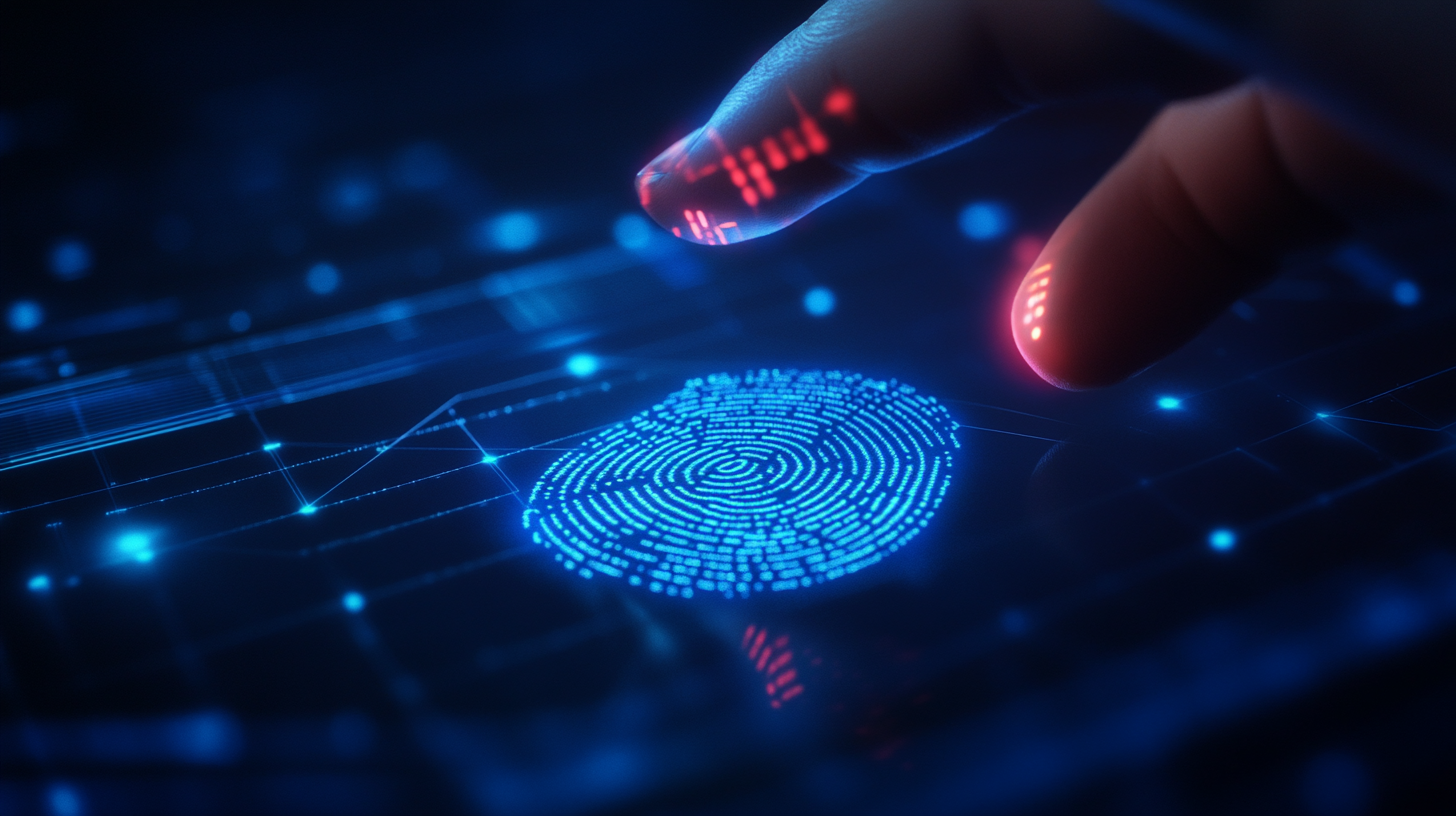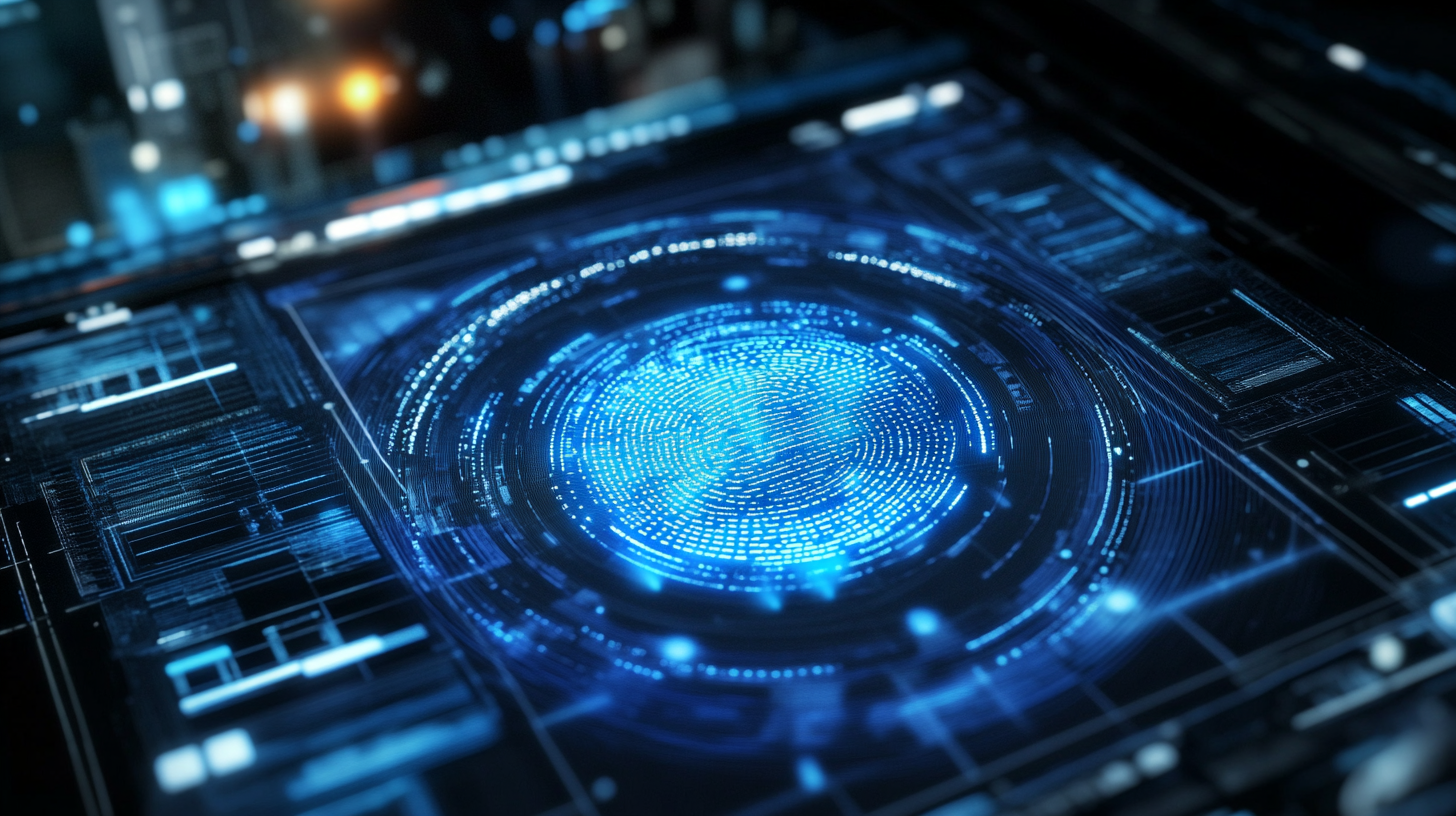10 Unmatched Reasons Why the Best Biometric Device Revolutionizes Security Today
In today's rapidly evolving technological landscape, the surge in security breaches and identity theft has prompted organizations worldwide to seek robust solutions for safeguarding sensitive information. According to a recent report by Market Research Future, the global biometric systems market is projected to reach approximately $59.31 billion by 2025, driven by the growing demand for enhanced security measures and the adoption of biometric devices across various sectors.

Biometric devices, leveraging unique physiological characteristics like fingerprints, facial recognition, and iris patterns, are transforming the way businesses approach security. These technologies not only provide unparalleled user authentication but also streamline access control and improve overall security protocols. As we explore the unmatched reasons why the best biometric devices are revolutionizing security today, it becomes clear that their implementation is essential for both organizational resilience and customer trust in an increasingly digital world.
The Evolution of Biometric Technology in Modern Security Systems
Biometric technology has undergone a remarkable evolution, significantly enhancing modern security systems. Historically, traditional identification methods such as passwords and ID cards were fraught with vulnerabilities, often leading to breaches and unauthorized access. According to a 2023 report by MarketsandMarkets, the global biometrics market is projected to reach $58.2 billion by 2025, underscoring the growing reliance on biometric solutions to safeguard sensitive information. This shift not only emphasizes user convenience but also the increasing demand for advanced security protocols in various sectors, including banking, healthcare, and government.
As biometric devices have advanced, they now incorporate sophisticated algorithms and machine learning techniques that improve accuracy and reduce false acceptance rates. Notably, a recent study from the International Journal of Information Security revealed that fingerprint recognition systems boast a false acceptance rate of less than 0.01%, significantly outperforming traditional security measures. This evolution signifies a turning point in security technology, as biometric devices not only offer enhanced protection but also adapt to the unique characteristics of individuals, providing a more personalized security experience. As organizations continue to adopt these cutting-edge systems, the landscape of security is being fundamentally transformed, setting a robust foundation for future innovations.
10 Unmatched Reasons Why the Best Biometric Device Revolutionizes Security Today
| Feature | Description | Benefits |
|---|---|---|
| Enhanced Security | Utilizes unique biological traits for access control. | Reduces the risk of unauthorized access. |
| User Convenience | Quick authentication processes. | Eliminates the need for remembering passwords. |
| Scalability | Compatible with various systems and devices. | Easily integrates into existing security frameworks. |
| Data Protection | Uses encrypted templates for storing biometric data. | Protects user data from breaches. |
| Cost-Effectiveness | Reduces theft and fraud incidents. | Saves on potential losses over time. |
| Versatility | Applicable in various sectors like finance, healthcare, and law enforcement. | Broadens the scope of security applications. |
| Time Efficiency | Rapid identification and access procedures. | Increases operational productivity. |
| User Tracking | Tracks user access and actions with precision. | Enhances accountability and monitoring. |
| Future-Ready | Incorporates evolving technologies and standards. | Prepares systems for future security challenges. |
Key Features That Set Top Biometric Devices Apart in Today’s Market
 In today's security landscape, biometric devices have emerged as a game-changer, offering unique features that significantly enhance protection. One key attribute is the unparalleled accuracy of biometric recognition systems. According to a report by MarketsandMarkets, the global biometric market is expected to grow from $33.5 billion in 2020 to $62.5 billion by 2025, driven by rising security concerns and the need for reliable identification methods. Devices utilizing advanced algorithms for fingerprint, facial recognition, or iris scanning can achieve accuracy rates exceeding 99%, making them far superior to traditional password-based security systems, which are vulnerable to breaches.
In today's security landscape, biometric devices have emerged as a game-changer, offering unique features that significantly enhance protection. One key attribute is the unparalleled accuracy of biometric recognition systems. According to a report by MarketsandMarkets, the global biometric market is expected to grow from $33.5 billion in 2020 to $62.5 billion by 2025, driven by rising security concerns and the need for reliable identification methods. Devices utilizing advanced algorithms for fingerprint, facial recognition, or iris scanning can achieve accuracy rates exceeding 99%, making them far superior to traditional password-based security systems, which are vulnerable to breaches.
Another distinguishing feature of top biometric devices is their convenience and speed. A study by the International Journal of Information Management found that biometric authentication can reduce access time by up to 70%, allowing for seamless entry into secured areas. This swift processing capability is crucial in environments like airports and corporate offices, where time efficiency can significantly impact operations. Furthermore, with the integration of multi-factor authentication in biometric systems, users benefit from enhanced security without sacrificing user experience, ensuring that only authorized individuals gain access while maintaining a streamlined workflow.
How Biometric Devices Enhance Authentication and Access Control
In today’s fast-paced world, biometric devices are transforming the landscape of authentication and access control. By leveraging unique biological traits such as fingerprints, facial recognition, and iris scans, these advanced systems offer a level of security that traditional methods simply cannot match. Businesses and individuals can now protect sensitive information and resources effectively, minimizing the risk of unauthorized access.
Tips for implementing biometric devices include ensuring proper data encryption and storage practices to safeguard personal information. Additionally, it’s crucial to regularly assess and update biometric systems to defend against evolving threats. Making the transition to biometric authentication not only enhances security but also streamlines user experience.
Furthermore, educating users about the benefits and functionalities of biometric technology can promote smoother transitions. When individuals understand how their biometric data works for them, they are more likely to embrace this innovative method of security. In a world where personal and organizational safety is paramount, investing in biometric devices is undeniably a strategic move for robust security protocols.
Real-World Applications: Where Biometric Devices Are Making a Difference
In today’s fast-paced world, biometric devices are transforming security across various real-world applications. From unlocking smartphones to securing access in high-security government buildings, these devices offer unparalleled accuracy and convenience. Their ability to authenticate individuals based on unique biological traits, such as fingerprints, facial recognition, and iris scans, provides a level of security that traditional passwords and keys simply cannot match.
Tips for effective biometric security implementation include ensuring that the biometric data is encrypted during transmission and storage to protect against unauthorized access. Additionally, organizations should regularly update the biometric templates to mitigate risks associated with spoofing attempts. By combining biometric authentication with multi-factor authentication methods, security can be significantly enhanced, making it harder for potential intruders to breach systems.
Another area where biometric devices are making a significant impact is in healthcare. Biometric identification systems can streamline patient checks and improve the overall efficiency of medical facilities while ensuring that patients receive accurate treatments. For healthcare providers, it is essential to train staff on the proper use of these devices to minimize errors and maintain patient privacy. Integrating biometric solutions can not only enhance security but also create a seamless experience for both healthcare professionals and patients alike.
Real-World Applications of Biometric Devices
Future Trends: What’s Next for Biometric Security Innovations
The future of biometric security innovations is headed towards a transformative era, driven by advancements in technology that enhance safety and user experience. As evidenced by the upcoming CES® 2025, where companies will showcase innovations like embedded biometric displays, the integration of biometric systems in automotive and financial technologies is set to redefine personal security and payment processes significantly. This evolution demonstrates a strong commitment to not only improving functionality but also enhancing user convenience and privacy.
Tips for organizations looking to implement biometric solutions include prioritizing user education about the technology to foster trust and security awareness. Additionally, investing in AI-driven deception detection technologies will be crucial for enhancing the reliability and security of biometric systems. This approach ensures that the systems are robust against emerging threats and can adapt to future challenges in cybersecurity.
As these trends unfold, companies are encouraged to explore collaborative efforts with fintech innovators to streamline biometric payment processes. This partnership will facilitate the secure exchange of information while building a seamless user experience, which is essential for the widespread adoption of biometric technologies in everyday transactions.
